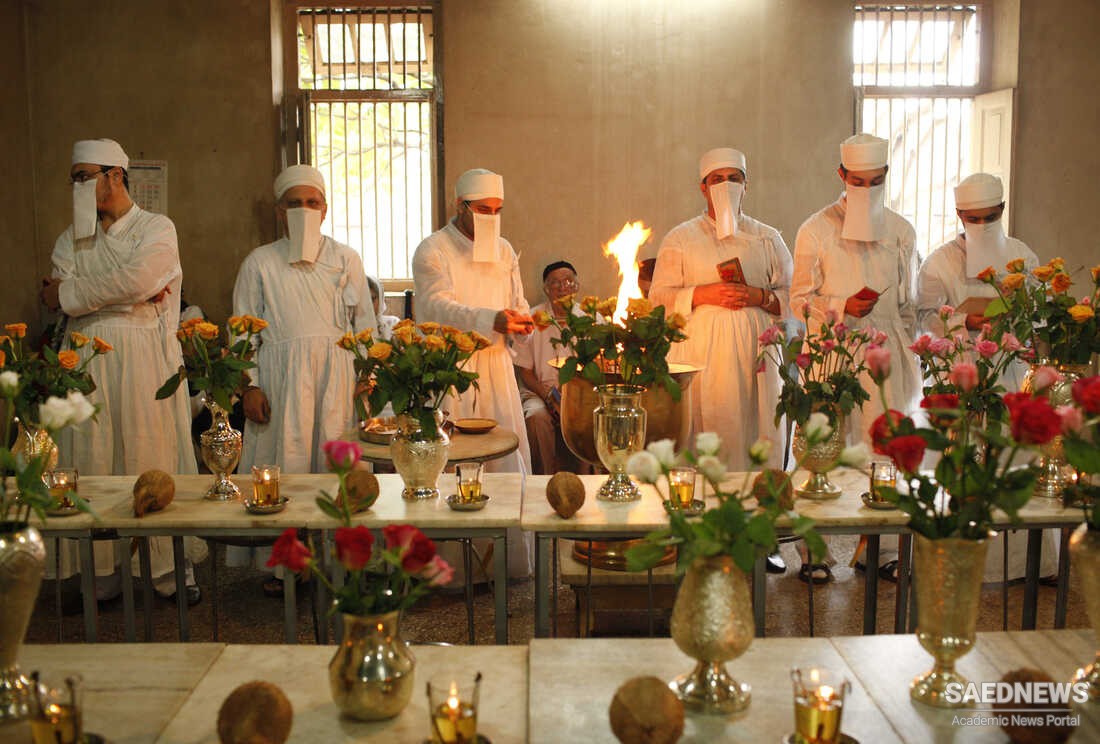The young priest will then become a full mobed. When he has demonstrated a mastery of all the rituals he is qualifi ed to perform any Zoroastrian ceremony. As a rule candidates for the priesthood learn the rituals by memorization and practice. They are not expected to learn Avestan and Pahlavi, although they may take lessons in the meaning of the rituals through translation. If they attend college later they may study the languages of Zoroastrianism at that time.
The examination for the priesthood in Iran is similar but candidates are tested more intensively on their knowledge and understanding of the religion, and there is only one grade of priest. The new mobed practices with others for a year, after which he is on his own. Zoroastrians do not gather weekly for regular worship services. Instead they recite the basic daily prayers fi ve times daily, either alone, in informal groups, or as a family. They do, however, have holidays or festivals during which they join together for worship and celebration.
There are seven great Zoroastrian festivals each year. Ancient in origin, they are linked to the Iranian agricultural year and to the seven physical creations for which the Amesha Spentas are responsible. In the atash behrams priests recite the holy day’s special liturgy. People participate in the jashan, or thanksgiving and memorial ceremony, and follow the special custom of the day, which may be merrymaking, putting on new clothes, or visiting the fire temple.
The six Zoroastrian gahambars (festivals) are: Maidhyoizarem (Midspring) Maidhyoishem (Midsummer) Paitshahem (Harvest) Ayathrem (Bringing in Cattle) Maidhyairem (Midwinter) Hamaspathmaedem Muktad (All Souls) The seventh and highest festival is Navruz, the New Year. The festival celebrates the creation of fi re and the Benefi cent Immortal Asha Vahista, or Highest Truth. It is thus the most sacred and joyous of all Zoroastrian holy days. It is held in the spring, just after the sixth gahambar, and so represents the renewal of life that spring symbolizes. It also represents the new order to come with Frashogard, world renewal. On Navruz people exchange presents, put on new clothes, settle any outstanding arguments, and visit their fi re temple to reaffi rm their faith. Zoroastrians celebrate gahambars as part of their religious duty. They believe that such times of community joy and harmony provide a glimpse of the spiritual world.


 Pavilion of the Holy Mantle, Topkapi Palace
Pavilion of the Holy Mantle, Topkapi Palace














































